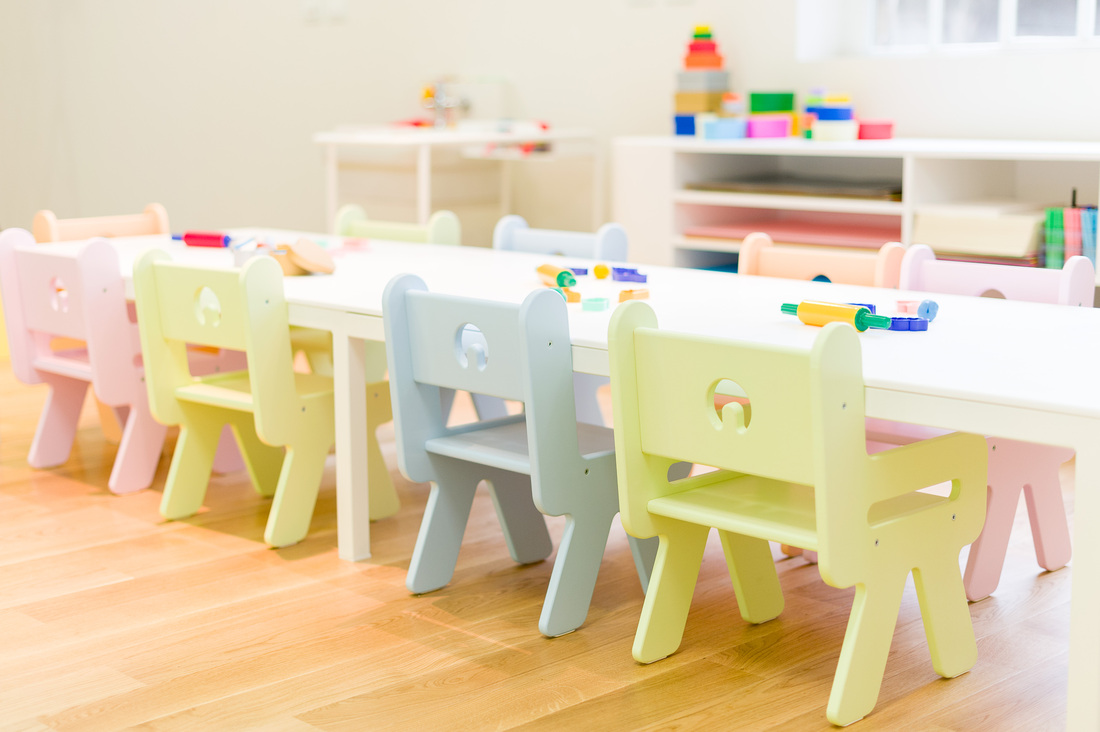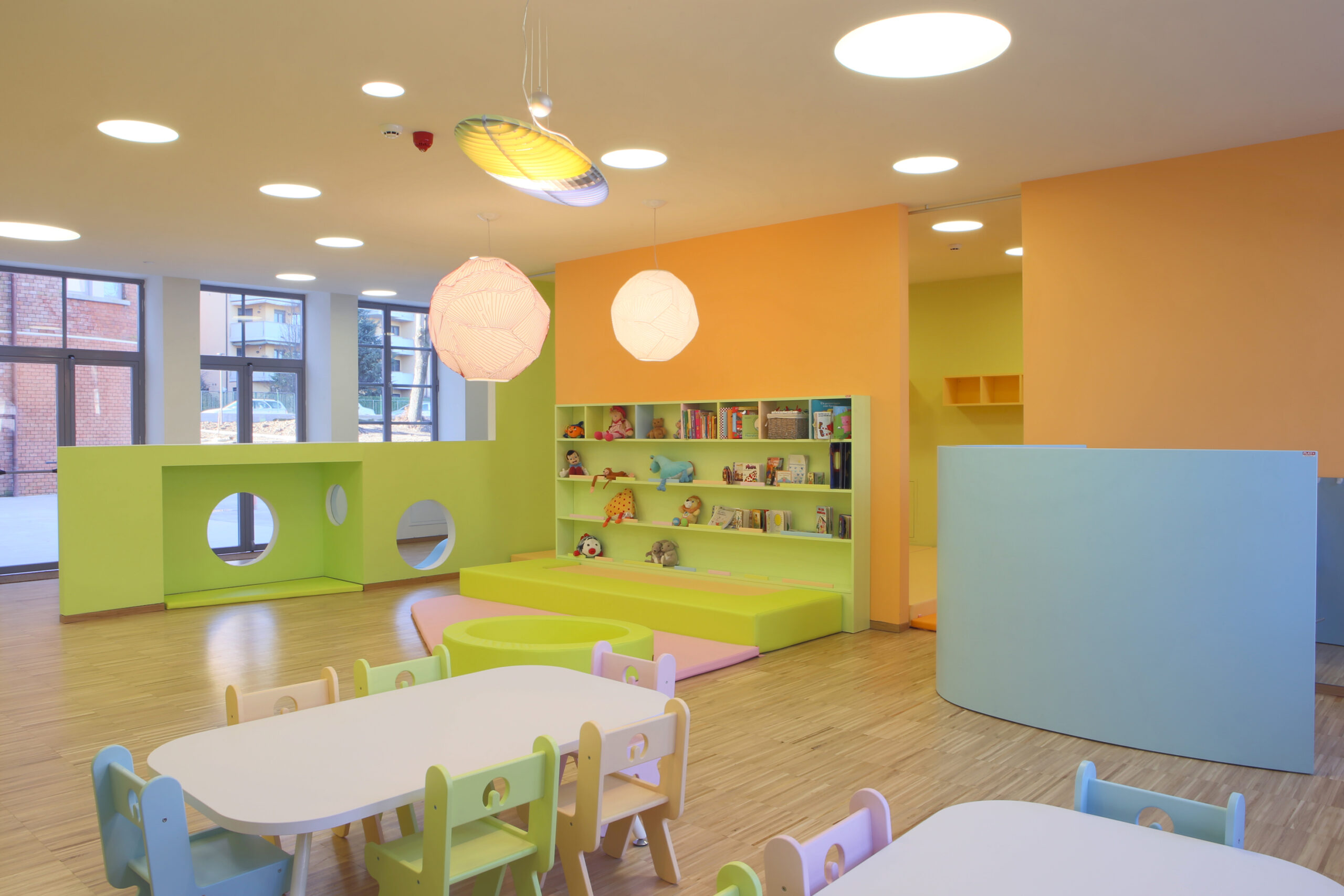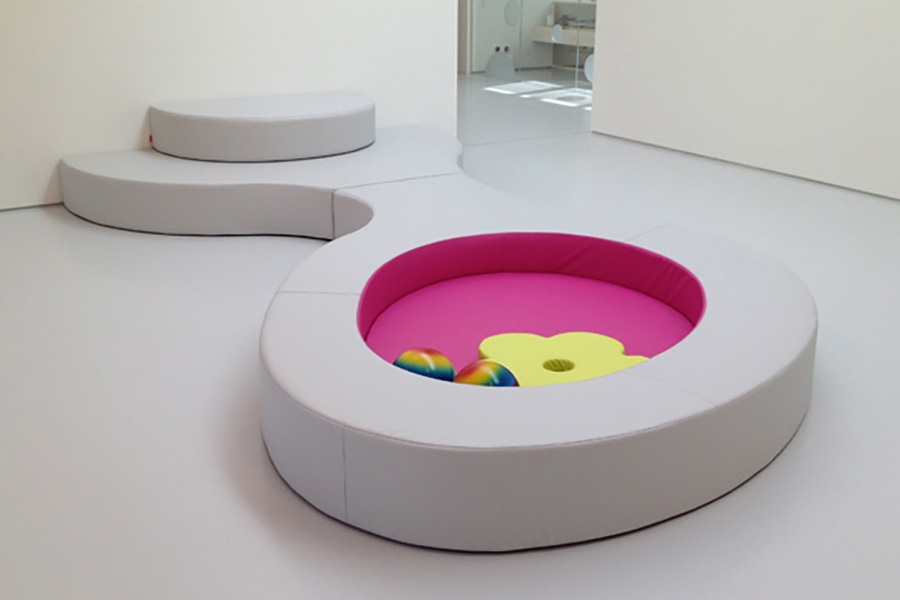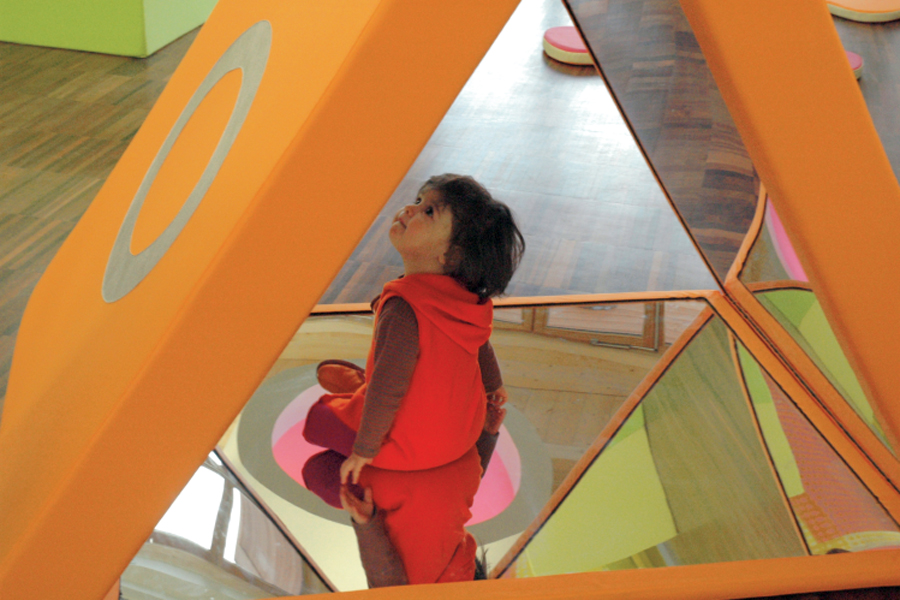“The environment should act as a kind of aquarium which reflects the ideas, ethics, attitudes, and culture of the people who live in it.”
— L. Malaguzzi
The Reggio Emilia approach to early years education began after the Second World War, in villages around the Italian town of the same name. It was shaped by Loris Malaguzzi (1920–1994), a teacher who worked closely with parents and local people to create schools that placed children at the centre of learning.
At the heart of this educational philosophy, space is considered a ‘third teacher’ and so is carefully thought out and arranged, functioning as a key source of educational stimulation and insight.
Hundred Languages
Malaguzzi believed that children are born with what he called “a hundred languages” — countless ways of thinking, expressing, and creating. This conviction shaped a new kind of school, built on relationships between children, teachers, families, and the wider community.
Educators and writers such as Carla Rinaldi, Vea Vecchi, Alfredo Hoyuelos, and Carolyn Edwards carried these ideas forward. They agreed that schools should be democratic spaces where children’s voices are respected, environments are treated as active partners in learning, and creativity is nurtured each day.
Principles
Researchers Fraser and Gestwicki identified eight principles that help explain how Reggio Emilia schools work as environments that teach. These principles are aesthetics, active learning, collaboration, transparency, bringing the outside world in, flexibility, relationship, and reciprocity. Together, they show how the environment can support children not only in their learning but also in how they connect with others and with the world around them.


To this list, many Reggio educators add a ninth principle: the “beauty of the unusual.” This captures Malaguzzi’s and Alfredo Hoyuelos’ idea that schools should not only enable routines but should also provoke curiosity, wonder, and the unexpected. Spaces should carry the potential to surprise and to open new possibilities for thinking. This could be as simple as the play of light through a window, or a mirrored corner that reflects the room from unexpected angles.
Design Strategies
In practice, Reggio schools rely on strategies and design choices to create spaces that speak, adapt, and invite children to explore.
The Language of Space
In Reggio Emilia, metaphors have been central to reimagining school environments. Malaguzzi often spoke of schools as workshops or even as integral living organisms, helping to break away from rigid models of the 1960s. A particularly significant metaphor appeared in the 1970s, when central halls were seen as little more than empty corridors. Architect Tullio Zini, working with an interdisciplinary team, parents, and teachers, studied how these spaces were used and found that their main problem was emptiness. Together, they introduced handcrafted furniture, which reshaped the halls into piazzas.
But a piazza could not be sustained by design alone. Staff in Reggio Emilia were carefully trained to attend to every detail, gesture, and behaviour that kept it alive. In this way, the piazza gave children a place to pause, meet others, and experience everyday spaces in new ways. What was once a corridor became a setting for conversation, play, and shared learning.



Learning Beyond the Clock
For Malaguzzi, time mattered as much as space in shaping learning. That conviction led him to reject the “cells and bells” of traditional schooling in favour of progettazione — open-ended projects that might unfold over a morning, a month, or even a year. In the same way, spaces were given time to be discovered and made meaningful by children. A corner of the atelier, a hideout under the stairs, or even the shadow on a kitchen floor might only reveal its value once a child had the freedom to linger there.
Reggio schools encouraged this rhythm by keeping doors open and allowing children to move freely, extending the independence found in Montessori’s “prepared environment.” Malaguzzi described this as “texturising time,” adding depth and richness to daily life so that learning could unfold at its own pace.
Flexible & Layered
Reggio schools often blur the boundaries that traditionally divide learning spaces. Malaguzzi encouraged educators to move beyond simple opposites, such as play versus learning, or individual versus community, and this philosophy extends to the architecture itself.
Children are given both public and private places: vibrant piazzas at the centre of school life, but also small corners or “third spaces” where they can rest or play quietly. Instead of rigid walls, partitions might be made of fabric, paper, or glass softened by filters, creating layered views and playful reflections. Indoors and outdoors also overlap: plants grow into piazzas, floors use materials more often found outside, and in some schools, glass doors and winter gardens extend learning into nature.
By softening these boundaries, Reggio schools create environments that are flexible, layered, and full of possibility, spaces that invite children to explore both together and alone, in light and shadow, inside and out.


Illusion & Imagination
Illusion is embraced as a way of opening children’s eyes to new perspectives. Mirrors are a common feature: cut into unusual shapes, placed on doors, or built into furniture, they disrupt the ordinary act of looking. Children catch shifting reflections, distorted images, and glimpses of themselves from unexpected angles. Play structures like the mirror triangle create reflections that split and shift, prompting children to question what they see and imagine new possibilities.
Light, too, is used playfully. Sunlight is captured and bounced around rooms through panes and skylights, creating glittering effects that teachers welcome rather than regulate. These experiments, also explored at the Atelier Raggio di Luce, encourage children to live with doubt and curiosity rather than fixed answers.
Beyond optics, illusion also shapes the choice of materials. Instead of figurative toys or cartoonish decorations, children encounter abstract objects and raw materials, ready to be reimagined in countless ways. A simple structure might be a house one day, a theatre the next, or a secret den. By leaving meanings open, Reggio environments invite children to build their own interpretations — reminding us that creativity grows best where nothing is predetermined.


Bold Choices
Reggio Emilia schools often make bold design decisions that challenge expectations. Instead of assuming small children need only small spaces and structures, many kindergartens include double-height ramps or staircases. These larger volumes give toddlers the chance for “big adventures,” encouraging them to use their whole bodies, senses, and perspectives to explore.

Space as the Teacher
The Reggio Emilia approach shows that space serves as a partner in children’s education. When thoughtfully created, it invites children to explore their hundred languages, build relationships, and discover beauty and meaning in everyday experiences.
References
Martín Domínguez, G. (2024). The Beauty of the Unusual: An Architectural Inquiry into the Reggio Emilia Approach. Springer.
Edwards, C., Gandini, L., & Forman, G. (Eds.). (1998). The Hundred Languages of Children: The Reggio Emilia Approach – Advanced Reflections. Ablex Publishing.
Rinaldi, C. (2006). In Dialogue with Reggio Emilia: Listening, Researching and Learning. Routledge.
